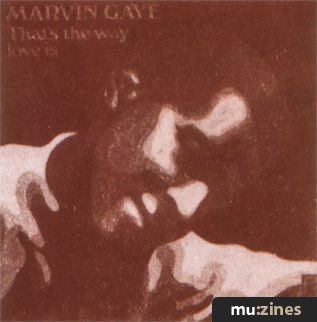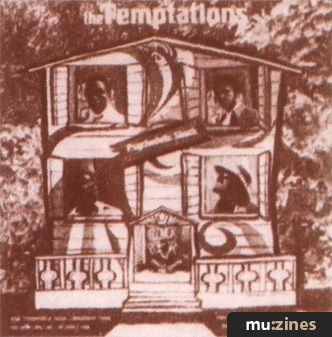Magazine Archive
Home -> Magazines -> Issues -> Articles in this issue -> View
The Sounds Of Motown | |
Article from Sound On Sound, June 1993 | |
The Motown sound has proved to be as influential as it is enjoyable, with classic Motown records still receiving regular airplay and hardly a year going by without a new release in the Motown style. Pauly and Joe Ortiz tell you the sounds and treatments you need to achieve an authentic feel and provide some patterns to spark off your own ideas.

This month, we bring you an irresistible collection of rare grooves from the classic sound of Motown. For those readers too young to remember Motown first hand, we'll be looking at the characteristic patterns that are the backbone of groups like the Four Tops, The Supremes, Stevie Wonder and many others (which we will list a little later). For continuity, we're using the grid format used in Recording Musician (where this series of articles in programming different styles of music began) with the top of the grid acting as an info line and chords above the beat at which they occur. We'll keep the chords to simple triads and inversions, with patterns in four-bar lengths. All of the patterns will be using a line-up consisting of Drum Kit, Tambourine, Bass and Electric Guitar. All hi-hat downbeats should be accented on the beat — so, for example, if you see eighths in a pattern, then each first beat of a pair of eighths will be accented.

PATTERN 1

For this pattern, we recommend a tempo of between 130 and 150 beats per minute. This groove is still one of the most used rhythms in Motown music. The bass drum should be tuned fairly tight with a pinch of high-mid boost, being careful not to overdo it, as the old Motown drum kits were far from well recorded — though this was very much a contributing factor to the overall feel of Motown tracks in general. The bass parts were normally played in eighths, with neat little rests inserted where you least expect them, so watch the grid carefully. The hi-hats are of the ambient variety and again, not clean at all, and they'll be playing straight eighths with only the occasional open hat to break things up — though bear in mind that the Motown drummer exercised extreme discipline in not playing what he didn't have to, and not for any lack of ability. The snare drum should be a bright and ringy reverbed snare, almost tinny in quality but with a good bit of medium-sized gritty reverb. As we have pointed out in previous instalments, try to adjust reverb time to suit the tempo of the piece to avoid too much ambient clutter. The bass sound may be a picked or plucked electric without chorus but a bit of reverb won't do any harm if used sensibly. The bass should sound as in Reggae music — as if it's strung with flat-wound strings (Rotosound round-wound bass strings had not even been invented in Motown's heyday) and EQ'd fairly heavy at the bottom end with little or no top-end boost. The electric guitar sound should be that of a clean Fender Telecaster or Stratocaster, with chords being played in clean, short strokes about a triplet

16th in length with a good helping of reverb. In fact, all parts treated with reverb should share the same reverb type — for authenticity, don't put a Room on the guitar and a Plate on the drums, for example, as the musicians were all in the same room when a record was made.
PATTERNS 2 & 3
The tempo of Pattern 2 can be between 80 and 100 beats per minute, and as you will note (no pun intended), the bass drum is different in its phrasing, as is the snare. The bass part is played in an almost legato style with a few short notes used as passing beats from one note to another. Pattern 3 can use a tempo setting of between 110 and 130 and all of the comments made for Patterns 1 and 2 also apply to this one.

You always know when a Motown track is starting, because it always begins with that distinctive drum fill followed by three or four female singers (sorry boys) oozing with 'oohs' and 'ahhs' through the intro leading to the verse. Other very important elements of the Motown sound are the Vibes, Baritone Sax and Piccolo flute following either the verse, chorus or both.
Also used is a small brass section, a piano and/or an electric organ, and glockenspiel or bell sounds were also often present.


ESSENTIAL MOTOWN SOUNDS
More from these topics
Beat Box |
Beating The System - Systems Music |
Funky Stuff - Making Classic Funk |
On The Beat - the next generation (Part 1) |
When Is A Song |
Orchestrating with MIDI (Part 1) |
So You Want To Be A... - Songwriter. |
Politics & Pop - Are They A Good Mix? |
Write Now |
Beat Box |
 Drum Programming - A Series By Warren Cann (Part 1) |
Write Now |
Browse by Topic:
Arranging / Songwriting
Drum Programming
Publisher: Sound On Sound - SOS Publications Ltd.
The contents of this magazine are re-published here with the kind permission of SOS Publications Ltd.
The current copyright owner/s of this content may differ from the originally published copyright notice.
More details on copyright ownership...
Feature by Joe Ortiz, Pauly Ortiz
Help Support The Things You Love
mu:zines is the result of thousands of hours of effort, and will require many thousands more going forward to reach our goals of getting all this content online.
If you value this resource, you can support this project - it really helps!
Donations for April 2024
Issues donated this month: 0
New issues that have been donated or scanned for us this month.
Funds donated this month: £7.00
All donations and support are gratefully appreciated - thank you.
Magazines Needed - Can You Help?
Do you have any of these magazine issues?
If so, and you can donate, lend or scan them to help complete our archive, please get in touch via the Contribute page - thanks!















